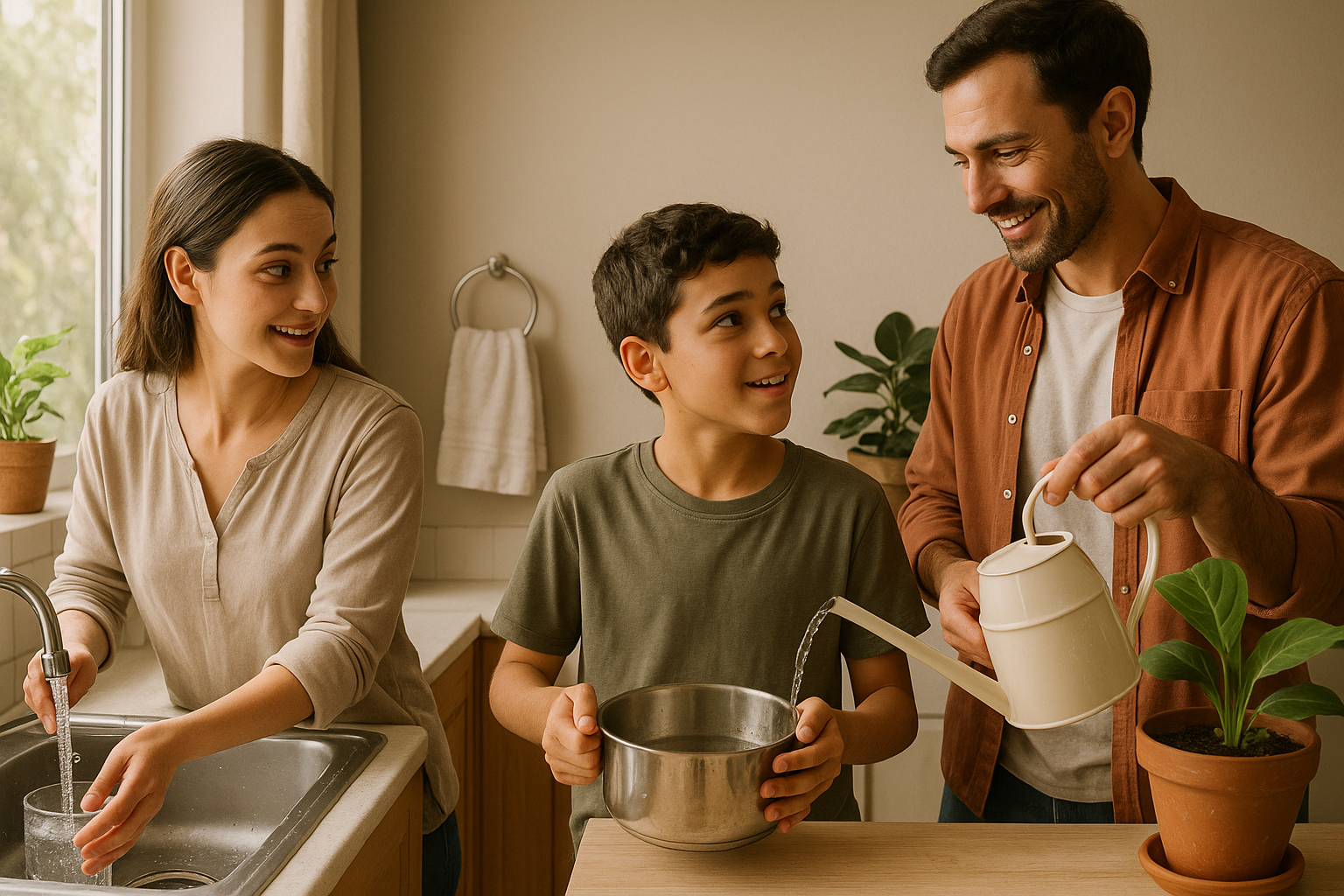Water is one of our most precious resources—and it’s becoming increasingly scarce in many regions around the world. Yet, in our daily lives, we often use far more than we realize. The good news is that saving water doesn’t have to mean cold showers or extreme measures.
With a few thoughtful adjustments, you can reduce your water usage significantly while maintaining a comfortable, practical lifestyle.
Why Saving Water Matters
Freshwater is limited. Only about 1% of all water on Earth is easily accessible for human use. Conserving water helps:
- Preserve ecosystems and wildlife
- Reduce energy used in water treatment and heating
- Prevent droughts and water shortages
- Lower your utility bills
Even small changes in your home can save hundreds—or thousands—of liters each month.
In the Bathroom: Small Changes, Big Savings
1. Turn Off the Tap
- Don’t let water run while brushing your teeth or shaving
- Use a cup to rinse instead
2. Take Shorter Showers
- Try to keep showers under 5 minutes
- Play a short song as a timer
- Turn off water while lathering up or shaving
3. Install Water-Saving Fixtures
- Use low-flow showerheads and faucet aerators
- Dual-flush or low-flush toilets can reduce water use by half
4. Fix Leaks Immediately
- A dripping faucet can waste up to 20 liters per day
- Silent toilet leaks are especially sneaky—check regularly
In the Kitchen: Efficiency Without Compromise
1. Only Run Full Loads
- Use dishwashers and washing machines only when full
- Choose eco or water-saving cycles
2. Use a Bowl to Wash Produce
- Fill a bowl with water instead of letting the tap run
- Reuse the rinse water to water your plants
3. Defrost Food Without Water
- Thaw in the fridge overnight or use the microwave—not under running water
4. Scrape, Don’t Rinse
- Scrape food scraps into the compost instead of rinsing dishes
- Modern dishwashers don’t need pre-rinsing
In the Laundry Room: Wash Smart
Laundry is one of the biggest household water consumers.
Sustainable laundry habits:
- Use cold water—saves energy and protects fabrics
- Wash full loads only
- Skip extra rinse cycles
- Reuse towels more than once
- Spot clean clothes when possible
Consider using a front-loading washer—they use 40–50% less water than top loaders.
Outdoors: Conserve Without Letting the Garden Die
1. Water Plants Early or Late
- Watering during cool hours reduces evaporation
- Avoid watering during peak sunlight
2. Use Mulch and Native Plants
- Mulch retains soil moisture
- Native or drought-resistant plants require less water
3. Collect Rainwater
- Set up a rain barrel to capture water from gutters
- Use it to water plants or wash outdoor areas
4. Sweep Instead of Hosing
- Use a broom to clean patios and sidewalks instead of spraying them down
Everyday Habits That Make a Difference
1. Reuse Greywater
- Use leftover cooking water (e.g. pasta or rice water) to water plants
- Save the water used to rinse fruits and veggies for the same purpose
2. Fill the Sink, Not the Stream
- When hand-washing dishes, fill the sink or a basin rather than letting water run
3. Educate and Involve Others
- Make water-saving a family habit
- Talk to kids about water conservation
- Set household water-saving challenges
Invest Once, Save for Years
Some water-saving upgrades may cost a bit up front, but pay off quickly:
- Faucet aerators
- Rainwater collection systems
- Water-efficient appliances
- Drip irrigation systems
- Dual-flush toilets
Many municipalities offer rebates or incentives for installing water-saving equipment.
Respect the Source
Water is a life-giving resource, and respecting it is an act of gratitude. Every drop saved is a step toward a more sustainable and resilient future.
By integrating mindful practices into your daily routine, you can enjoy the same comfort and cleanliness—while preserving water for generations to come.
